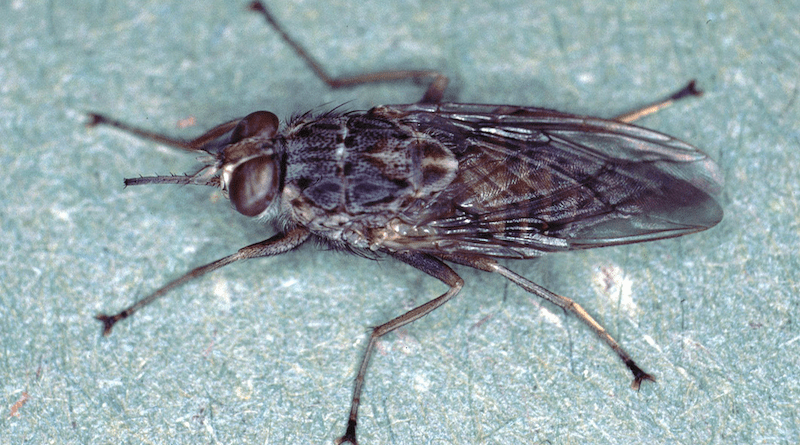Tsetse Fly Volatile Pheromones, Which Could Help Curb Diseases They Spread
A new insight into how tsetse flies mate could bolster the arsenal of tools to manage the spread of disease by these insects, which cause life-threatening illnesses throughout much of sub-Saharan Africa, and whose range is poised to expand with a changing climate.
The insects produce volatile pheromones that control their mating behavior, according to a new study; despite more than a century of tsetse research, volatile sex pheromones had not been previously identified. Tsetse flies transmit trypanosomes – unicellular parasites that cause trypanosomiasis in humans and animals.
For decades, the primary means of controlling these diseases has been to manage the tsetse flies that spread them. The most common and effective method is using odor-baited traps that attract flies by employing odorants derived from the animals they feed on.
However, because insect-derived pheromones have been successfully used in the control of a wide variety of other insects, their identification in tsetse could be useful in controlling these flies.
To identify volatile pheromones of tsetse, Shimaa Ebrahim and colleagues used a variety of approaches, including gas chromatography-mass spectrometry, electrophysiology, and behavioral analysis, in studies of the tsetse fly Glossina morsitans.
Through this analysis, Ebrahim et al. discovered several volatile compounds – methyl palmitoleate (MPO), methyl oleate, and methyl palmitate – that promoted rapid mating behavior in G. morsitans across experimental conditions.
They further characterized a subpopulation of olfactory neurons in the flies that respond to these pheromones. The findings also revealed that infection of female tsetse flies by trypanosomes alters both the pheromone profile and mating behavior of the flies and has the effect of reducing mating receptivity in females.
“Insects are among the most abundant and most diverse organisms on Earth and display robust olfactory behaviors,” writes Zainulabeuddin Syed in a related Perspective. “Therefore, it is not surprising that a better understanding of their sensory biology is widening possibilities to exploit their behavior against them to control disease spread.”

